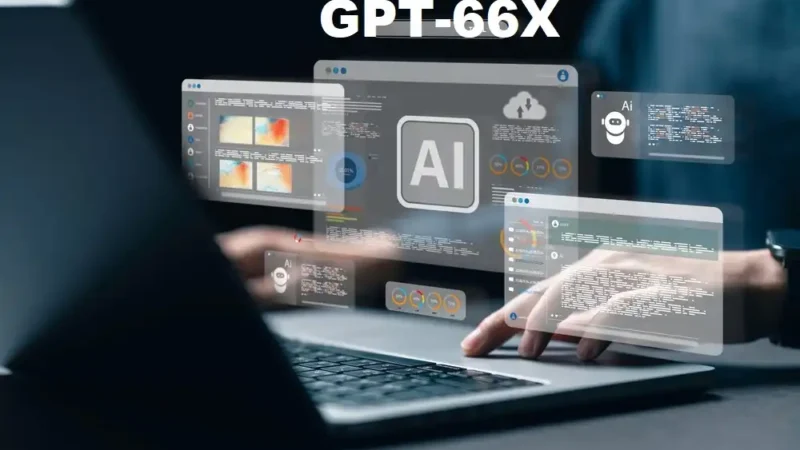XVIF: Revolutionizing Digital and Virtual Reality Interactions

The digital world is continually evolving, with innovations that push the boundaries of what we can achieve through technology. One such groundbreaking development is XVIF, or eXtended Virtual Interface Framework. This article delves into the intricate world of XVIF, exploring its origins, capabilities, applications, and future potential. By understanding XVIF, we can better appreciate its role in transforming virtual reality (VR) and digital interactions.
What is XVIF?
XVIF stands for eXtended Virtual Interface Framework. It is a sophisticated technology designed to enhance virtual and augmented reality experiences by creating more immersive and interactive digital environments. At its core, XVIF aims to bridge the gap between the physical and virtual worlds, allowing users to interact with digital content in ways previously unimaginable.
The foundation of XVIF lies in its ability to generate highly realistic virtual environments, leveraging advanced technologies such as augmented reality (AR) and virtual reality (VR). This framework enables the creation of digital simulations that closely mimic real-world scenarios, providing users with a seamless and engaging experience.
The Origins and Development of XVIF
The development of XVIF can be traced back to the efforts of the Khronos Group, a consortium of industry leaders including NVIDIA, AMD, and Meta. Introduced in 2020, XVIF was envisioned as a standardized format to overcome the challenges associated with VR content creation and consumption. The Khronos Group’s goal was to establish a universal language for VR, facilitating compatibility and interoperability across various platforms and device.
Since its inception, XVIF has garnered significant attention and support from major companies and developers within the VR community. Continuous research and development efforts have propelled XVIF forward, enhancing its capabilities and expanding its applications.
Key Features and Capabilities of XVIF
XVIF is distinguished by several key features that make it a powerful tool for creating and interacting with virtual environments:

1. High-Quality Compression
XVIF utilizes advanced compression algorithms to optimize video file sizes without compromising visual quality. Techniques such as motion compensation, discrete cosine transform (DCT), and entropy coding ensure efficient video compression, making it suitable for bandwidth-constrained environments.
2. Versatility and Interoperability
One of XVIF’s most significant advantages is its compatibility with a wide range of devices, platforms, and applications. Whether on a desktop computer, smartphone, or smart TV, XVIF-encoded videos can be played back seamlessly. Popular media players like VLC, Windows Media Player, and QuickTime support XVIF-encoded videos, ensuring widespread compatibility.
3. Enhanced Immersive Experiences
By leveraging AR and VR technologies, XVIF creates highly immersive digital environments. Users can interact with virtual content in real-time, experiencing a level of immersion and engagement that goes beyond traditional digital media.
4. Open Ecosystem
XVIF promotes an open ecosystem where developers of all sizes can contribute to the VR landscape. This openness fosters collaboration and innovation, allowing for the continuous development of new features and improvements.
5. Support for Developers
For developers and content creators, XVIF offers comprehensive support through software libraries and development tools. These resources empower developers to integrate XVIF into their applications, enabling efficient video playback and distribution across various platforms.
Practical Applications of XVIFS
The versatility and efficiency of XVIF make it suitable for a myriad of applications across different industries. Here are some notable examples:
1. Streaming Services
XVIF enables streaming platforms to deliver high-quality video content efficiently, reducing bandwidth requirements without compromising the viewing experience. This is particularly beneficial for live streaming and on-demand video services, ensuring smooth playback across various devices.
2. Video Editing
In the realm of video editing, XVIF’s compression capabilities allow editors to work with high-resolution footage while minimizing storage and bandwidth requirements. This optimization enhances editing flexibility and efficiency.
3. Digital Signage
XVIF offers an efficient solution for delivering dynamic video content to displays and screens in digital signage applications. Whether for advertising, informational displays, or entertainment, XVIF ensures reliable and high-quality content delivery.
4. E-Learning Platforms
Educational platforms can leverage XVIF to deliver high-quality video content to students across different devices and platforms. By optimizing video compression, XVIF ensures that educational resources are accessible and engaging, even in bandwidth-constrained environments.
5. Gaming
XVIF holds significant promise for creating immersive and interactive gaming experiences. By enabling developers to build detailed virtual worlds and interactive elements, XVIF pushes the boundaries of traditional gaming, offering players a new level of immersion and engagements.
Challenges and Future Outlook
While XVIF holds immense potential, realizing its full capabilities requires overcoming several challenges:
1. Adoption and Integration
Widespread adoption and seamless integration into existing digital infrastructure are crucial for XVIF’s success. Ensuring that XVIF is accessible to a broad audience and compatible with various platforms and devices is essential for its widespread use.
2. Hardware and Software Development
The development of XVIF-compatible hardware and software presents its own set of challenges. Designing immersive VR headsets, creating intuitive user interfaces, and ensuring efficient resource management are critical components for the success of XVIF.
3. Learning Curve for Developers
For developers, mastering XVIF requires learning new tools and workflows. Providing comprehensive documentation, tutorials, and support resources can help mitigate this learning curve and encourage more developers to adopt XVIF.
Despite these challenges, the future of XVIF looks promising. Ongoing research and development efforts aim to enhance XVIF’s capabilities, including improvements in compression efficiency, compatibility, and support for emerging technologies. As digital media continues to evolve, the demand for efficient video compression and playback solutions will only intensify, positioning XVIF as a significant player in shaping the future of video technology.
Conclusion
XVIF represents a compelling solution for addressing the challenges posed by the ever-increasing demand for high-quality digital content. Whether in streaming services, video editing, digital signage, e-learning, or gaming, XVIF offers a versatile and efficient framework that is poised to redefine the landscape of virtual reality and digital interactions.
As an innovative technology, XVIF stands as a beacon of progress in the digital world, empowering content creators, developers, and consumers alike to unlock new possibilities in video technology. By understanding and embracing XVIF, we can look forward to a future where immersive and interactive digital experiences become an integral part of our everyday lives.
Overall, XVIF is more than just a technological advancement; it is a transformative tool that bridges the gap between reality and digital simulation, offering unparalleled opportunities for innovation and creativity in the digital realm. As we continue to explore its potential and overcome its challenges, XVIF will undoubtedly play a pivotal role in shaping the future of virtual and augmented reality.






